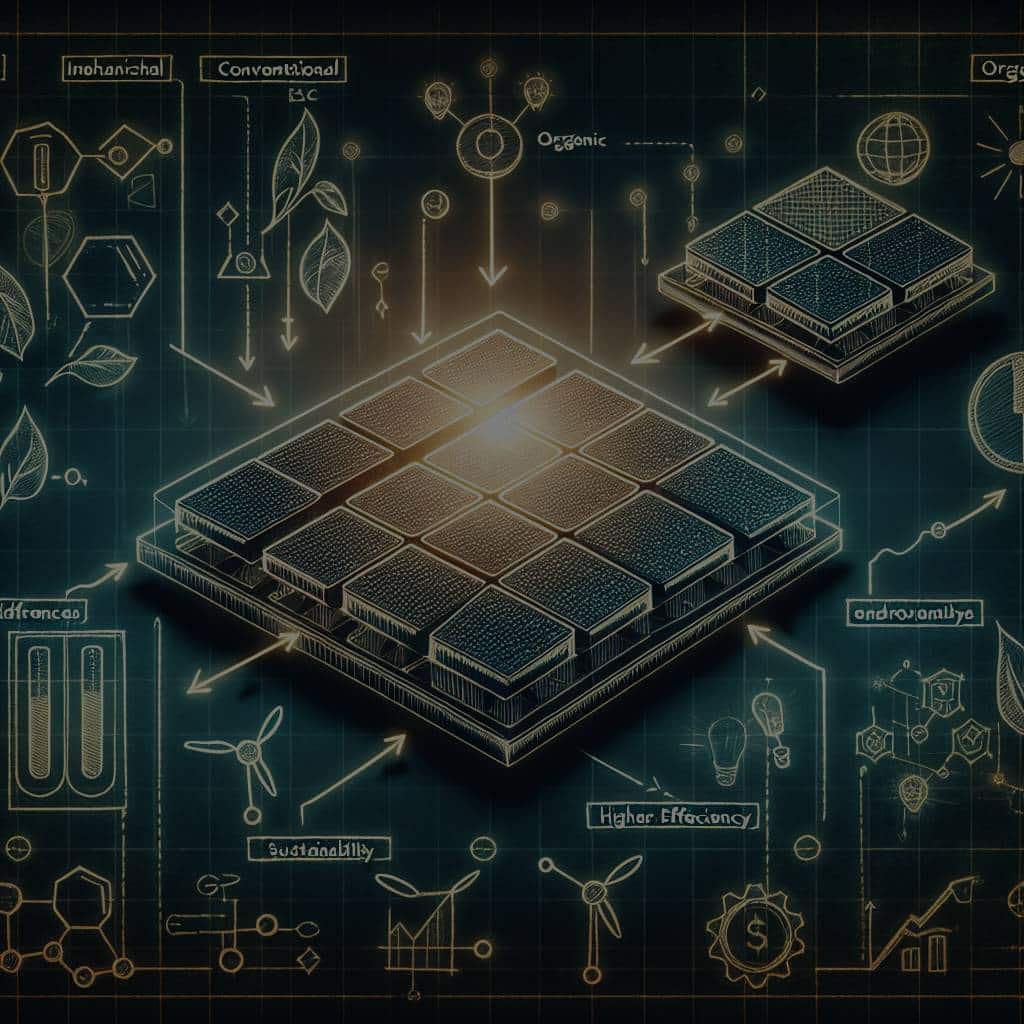What’s New in the Development of Organic Photovoltaic Cells?

As we continue to seek sustainable and environmentally friendly energy sources, we are drawn to the power of the sun. Solar energy is one of the most promising areas of research, and a particular focus is being placed on the development of organic photovoltaic cells (OPVs). These cells are based on organic materials like polymers and small molecules, which offer a host of benefits over their traditional silicon counterparts. In this article, we delve into the latest advancements and innovations in this exciting field.
The Basics of Solar Cells and Organic Materials
To comprehend the advancements being made in the field of organic photovoltaic cells, it’s crucial to understand a bit about how solar cells work and why organic materials are being used in their construction.
Also to read : Discover top real estate properties in terrebonne with françois pitre
A solar cell is a device that converts light energy, specifically sunlight, into electrical energy. It does this by absorbing light and creating a flow of electric charge. The efficiency of a solar cell is measured by its Power Conversion Efficiency (PCE), which represents how much of the light energy is successfully converted into usable electric energy.
In the context of organic photovoltaic cells, the term ‘organic’ refers to a specific class of materials: organically based materials, such as polymers and small molecules. These materials offer several advantages over traditional silicon cells, including flexibility, lighter weight, and the potential for lower production costs.
Also read : What Strategies Enhance Learning through Virtual Field Trips for UK Students?
The efficiency of organic photovoltaic cells has traditionally been lower than that of silicon cells. However, recent developments have shown promising increases in PCE, making them a more viable alternative for solar energy generation.
The Role of Polymer-Based Donor and Acceptor Materials
A critical aspect of organic photovoltaic cells lies in the materials used, particularly the donor and acceptor materials. In an OPV, the donor material donates an electron when hit by light, while the acceptor material accepts this electron, creating a flow of electric charge.
Traditionally, a common choice for the acceptor material in OPVs has been a molecule called PCBM. However, researchers are continually exploring new material combinations for even better performance.
One recent advancement is the use of polymer-based donor and acceptor materials. These materials can be tuned at the molecular level to optimize their properties, including their light absorption, electronic structure, and morphology.
Highly efficient polymer donors and acceptors have been developed, significantly improving the performance and efficiency of organic photovoltaic cells. These materials enable more efficient light absorption and charge transport, leading to higher PCE values.
Innovations in Cell Morphology
The cell morphology, or the physical arrangement and structure of the materials within the cell, is another critical factor influencing the efficiency of organic photovoltaic cells.
In an organic solar cell, the donor and acceptor materials form a network known as the ‘active layer’. The morphology of this active layer profoundly impacts the cell’s efficiency, as it influences the absorption of light and the transport of charge.
Significant advancements have been made in controlling the cell morphology. Researchers have developed techniques to control the morphology at the nanoscale, creating a more efficient network for charge transport and light absorption. Such controlled morphologies have led to a marked increase in the efficiency of organic photovoltaic cells.
High-Efficiency OPVs: The Path Forward
While the efficiency of organic photovoltaic cells has traditionally lagged behind silicon-based cells, recent advancements have shown that high-efficiency OPVs are within reach.
New materials, such as non-fullerene acceptors, have shown potential for high efficiency. These materials offer improved light absorption and charge transport properties, leading to significantly higher PCE values.
Another promising development is the use of tandem cells, where two or more cells are stacked together. Each cell in the stack absorbs a different portion of the light spectrum, allowing for more efficient light absorption and a higher overall PCE.
Improvements in fabrication techniques have also played a role in increasing efficiency. Better control over material deposition and cell structure has led to improvements in cell performance and consistency.
Conclusion: Looking to the Future
While we have made significant strides in the development of organic photovoltaic cells, there is still much work to be done. The key to further advancements will lie in continued material innovation, improved control over cell morphology, and advancements in fabrication techniques.
As the field progresses, organic photovoltaic cells may well become a significant player in our quest for sustainable solar energy. As we continue to push the boundaries of what’s possible, the future of solar energy looks brighter than ever.
Optimizing the Bulk Heterojunction in Organic Photovoltaics
In an organic solar cell, the active layer often consists of a so-called bulk heterojunction. This structure is made up of a blend of donor and acceptor materials, and its optimization is crucial for maximizing the solar cell’s performance.
The bulk heterojunction allows for efficient charge separation, as the interpenetrating network of donor and acceptor materials ensures that excitons, which are electron-hole pairs created by light absorption, do not have to travel far before reaching an interface where they can be split into separate charges.
However, achieving an optimal bulk heterojunction is a complex task. A delicate balance must be struck between creating an interpenetrating network for efficient charge separation and ensuring that continuous pathways for charge transport exist. Both of these factors are heavily influenced by the nanostructure of the bulk heterojunction, which in turn is determined by the nature of the materials used and the processing conditions.
One recent innovation for controlling the bulk heterojunction morphology is the use of thermal annealing. By heating the organic photovoltaic after its initial formation, researchers can induce a controlled phase separation of the donor and acceptor materials. This process can lead to an improvement in the solar cell’s power conversion efficiency by enhancing charge separation and transport.
The Promise of Thin Film and Flexible Organic Photovoltaic Cells
One of the most promising aspects of organic photovoltaics is their potential to be used in thin film and flexible applications. Compared to traditional silicon-based solar cells, organic solar cells can be made much thinner and lighter, opening up a whole new range of possibilities for their integration into everyday life.
Thin film organic solar cells are typically only a few hundred nanometers thick, compared to several hundred micrometers for silicon solar cells. This drastic reduction in thickness allows for much more flexible solar cells, which can be integrated into items like flexible display screens, wearable technology, or even clothes.
The fabrication of thin film organic solar cells has been made possible by advancements in processing techniques. Techniques such as spin coating, inkjet printing, and roll-to-roll coating have been used to deposit the organic materials onto flexible substrates, creating thin, flexible, and lightweight solar cells.
However, challenges still exist. The power conversion efficiency of thin film organic solar cells is generally lower than that of their thicker counterparts. Researchers are actively working on ways to increase this efficiency while maintaining the cells’ thin and flexible characteristics.
Conclusion: A Bright Future for Organic Photovoltaics
Organic photovoltaic cells, with their potential for high efficiency and adaptability to flexible applications, represent an exciting avenue in the field of renewable energy. The advancements made in donor-acceptor materials, cell morphology, bulk heterojunction optimization, and thin film fabrication techniques have brought us closer to realizing the full potential of this technology.
However, there are still challenges to be addressed, including the need to further increase power conversion efficiency and to improve the stability and lifespan of the cells. Continued research and innovation in these areas will undoubtedly lead to further improvements in the performance of organic photovoltaic cells.
Looking ahead, as we continue to explore new materials and fabrication techniques, the future of organic photovoltaics appears very promising. With their potential to be integrated into everyday objects and to contribute to reducing our reliance on fossil fuels, these solar cells could play a significant role in our transition to sustainable and renewable energy sources. It’s a future that’s brighter, not just for us, but for generations to come.
